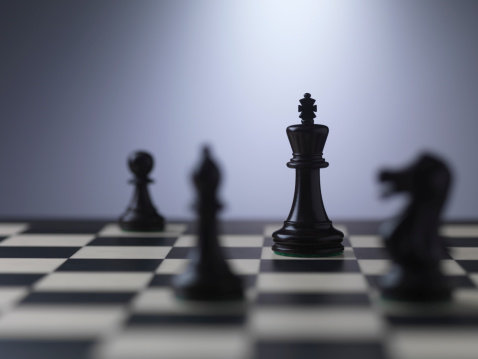
1) Don’t do what your enemy is prepared for.
Frontal assaults against prepared defenses are stupid.
From the beginning of organized warfare, frontal attacks against prepared defenses have usually failed, a fact written large in military history for all generals to see… great generals strike where they are least expected against opposition that is weak and disorganized.
Almost all successful attacks have hit enemies from the rear, from the flank, or anywhere it is not expected. Do not fight fair.
Because enemy response is so unpredictable, commonplace or mediocre generals often do not understand the full significance of flank or rear attacks and, usually because of strong enemy resistance, find themselves drawn or provoked into a direct strategy and frontal attacks, which are rarely decisive. One of the factors that make a general great, and therefore make him rare, is that he can withstand the urge of most men to rush headlong into direct engagements and can see instead how he can go around rather than through his opponent. One reason such generals are few is that the military profession, like society as a whole, applauds direct solutions and is suspicious of personalities given to indirection and unfamiliar methods, labeling them as deceptive, dishonest, or underhanded.
And:
B. H. Liddell Hart epitomizes much military wisdom in two axioms. The successful general, he says, chooses the line or course of least expectation and he exploits the line of least resistance.
2) Always attack from multiple angles
One big mess of soldiers charging forward is not strategic. Split your forces and hit the enemy from multiple fronts.
The essential formula of actual battle is a convergent assault. A commander achieves this by dividing the attacking force into two or more segments. Ideally each segment attacks the same target simultaneously and in close coordination, but from a different direction or approach, thereby holding all enemy elements in the grip of battle and preventing any one from aiding others. Sometimes one part of a force fixes the enemy in place or distracts him while the other part maneuvers to gain surprise and break up the defense.
3) Don’t focus on the fight. Focus on the end goal and you may not need to fight.
Realize that war is no one’s end goal. If you can break the enemy’s will or ability to fight, and you can win without conflict. Think about the politics of situation.
Yet the purpose of war is not battle at all. It is a more perfect peace. To attain peace, a belligerent must break the will of the enemy people to wage war. No nation goes to war to fight. It goes to war to attain its national purpose. It may be that a nation must destroy the enemy’s army to achieve this purpose. But the destruction is not the end, it is only the incidental by-product or the means to the end. If a commander looks at the peace he is seeking at the conclusion of war, he may find numerous ways of attaining it by avoiding the enemy’s main force and striking at targets that may destroy the enemy’s desire or ability to wage war.
Join over 161,000 readers. Get a free weekly update via email here.
Related posts:
New Harvard Research Reveals A Fun Way To Be More Successful
The 8 Things The Happiest People Do Every Day
How To Stop Being Lazy And Get More Done – 5 Expert Tips
Read next: How the Most Powerful People Get Things Done: 4 Tips From a White House Staffer
More Must-Reads from TIME
- Donald Trump Is TIME's 2024 Person of the Year
- Why We Chose Trump as Person of the Year
- Is Intermittent Fasting Good or Bad for You?
- The 100 Must-Read Books of 2024
- The 20 Best Christmas TV Episodes
- Column: If Optimism Feels Ridiculous Now, Try Hope
- The Future of Climate Action Is Trade Policy
- Merle Bombardieri Is Helping People Make the Baby Decision
Contact us at letters@time.com